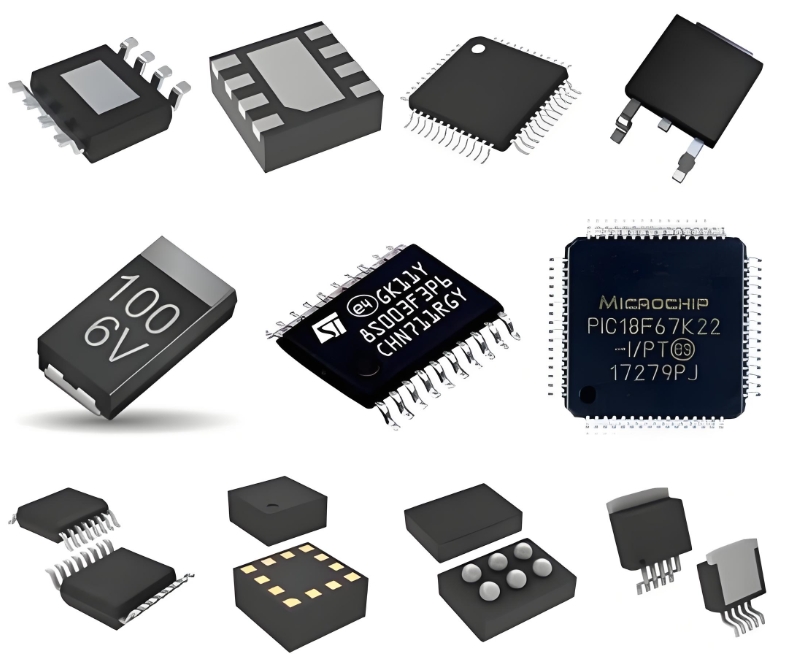**ADV7123KST140: A Comprehensive Technical Overview and Application Guide**
The **ADV7123KST140 (ADV7123)** is a monolithic, triple-channel, high-speed digital-to-analog converter (DAC) specifically designed for high-resolution color graphics applications. This integrated circuit has established itself as a cornerstone in systems requiring precise and rapid conversion of digital pixel data into analog video signals. Its primary function is to generate the red, green, and blue (RGB) component video outputs that drive displays, from professional-grade monitors to specialized industrial equipment.
**Architectural Overview and Key Specifications**
At its core, the ADV7123 integrates three complete, high-speed, 8-bit video DACs onto a single chip. Each DAC is paired with a corresponding color channel, working in parallel to ensure synchronized output. A critical feature of this device is its **on-board, high-impedance, analog output amplifiers**, which are capable of driving doubly-terminated 75Ω coaxial cables (37.5Ω load) directly, a standard requirement in video applications.
The device operates on a **standard +5V/±5V power supply**, making it compatible with a wide range of digital logic families. Its performance is characterized by several key parameters:
* **High DAC Conversion Rate:** Capable of operating at **140 MSPS (Mega Samples Per Second)**, making it suitable for very high-resolution and high-refresh-rate displays, including UXGA (1600x1200) and beyond.
* **Excellent Differential Non-Linearity (DNL):** Typically ±0.5 LSB, ensuring a monotonic transfer function and high image integrity.
* **Fast Settling Time and slew rate:** The output amplifiers are designed for rapid voltage settling, which is crucial for maintaining sharp edges and preventing smearing in the video image.
The digital interface is straightforward, utilizing separate 8-bit data buses for each color channel, alongside standard control signals: a **high-speed clock (CLOCK)**, a **blanking signal (BLANK)**, and a **sync signal (SYNC)**.
**Critical Internal Functionality: The Palette DAC and Output Stages**
A defining aspect of the ADV7123's architecture is its "Palette DAC" design. This refers to the inclusion of **256-bit wide, high-speed, pixel-input registers (latches)** for each color channel. These registers sample and hold the incoming 8-bit digital data on the rising edge of the input clock. This latching action synchronizes the fast digital data, providing a stable value for the DAC cores to convert.
The converted analog current from each DAC is then fed into its respective **high-speed, current-steering output amplifier**. These amplifiers are designed for a **composite video output voltage range of between 1.0V and 1.4V**, depending on the external reference configuration and load. The output stages are highly flexible; the full-scale output current can be easily set using a single external resistor (**RSET**) connected to the `VREF` pin.
**Application Guide and Design Considerations**

The ADV7123 finds its home in a vast array of applications, including:
* High-resolution graphic display systems
* **RGB/CVBS video signal generators**
* Digital video effects systems
* **High-frequency display controllers** and image processing hardware
* Medical imaging displays and industrial visualization systems
For a successful implementation, designers must pay close attention to several factors:
1. **Power Supply Decoupling:** As with any high-speed mixed-signal device, **robust power supply decoupling is absolutely critical**. A combination of bulk capacitors (e.g., 10µF) and local, high-frequency ceramic capacitors (0.1µF and 0.01µF) should be placed as close as possible to the `VAA` (analog) and `VDD` (digital) power pins to minimize noise and maintain signal integrity.
2. **PCB Layout and Grounding:** A smart grounding strategy is paramount. It is highly recommended to use a **solid, low-impedance ground plane**. While the ADV7123 has separate analog and digital ground pins (`GND` and `DGND`), they should be connected together at a single, quiet point very close to the device to prevent ground loops and minimize noise coupling from the digital sections.
3. **Output Filtering:** While the outputs can drive a 75Ω load directly, a simple **LC or RC low-pass filter** is often added at each output to further reduce high-frequency noise and DAC sampling artifacts, resulting in a cleaner analog signal.
4. **Signal Termination:** Proper termination at the destination (typically 75Ω to ground) is required to prevent signal reflections that can cause ghosting or ringing in the video image.
**ICGOOODFIND**
The ADV7123KST140 remains a highly reliable and performant solution for video DAC applications. Its integrated triple-channel architecture, high 140 MSPS speed, and robust output drivers make it a versatile choice for engineers designing systems that bridge the gap between digital processing and analog displays. Careful attention to PCB layout, power integrity, and signal conditioning is the key to unlocking its full performance potential.
**Keywords:** Video DAC, High-Speed DAC, RGB Video, Analog Output, Graphics Controller
